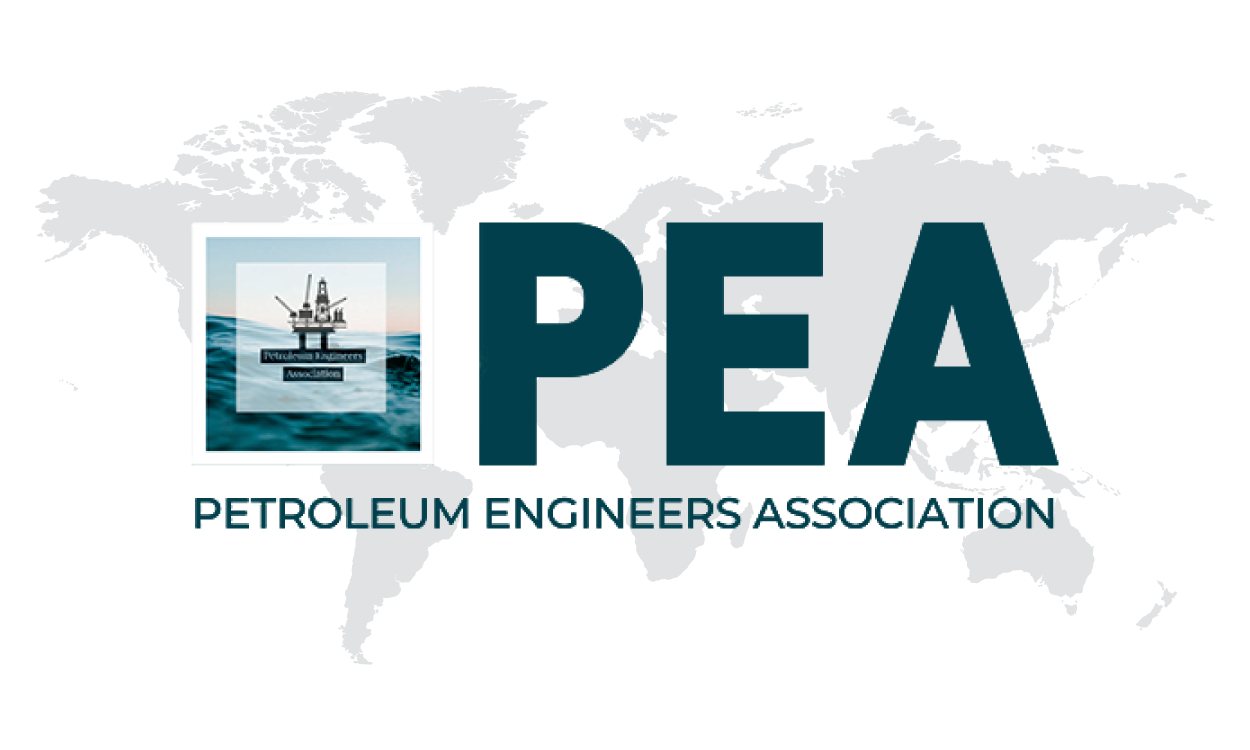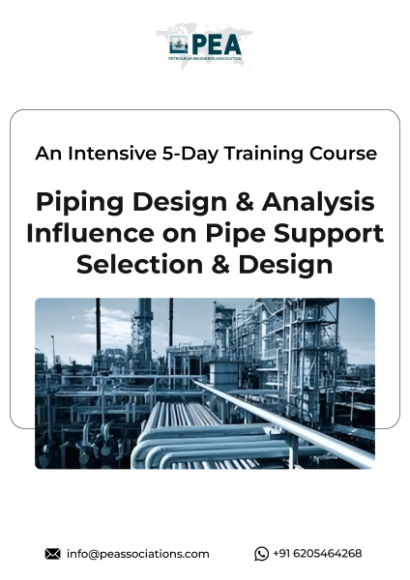Piping Design & Analysis: Influence on Pipe Support Selection & Design
Boost your team's skills and your budget! Enjoy group discounts for collaborative learning. Send an inquiry to info@peassociations.com.
Piping Design & Analysis Influence on Pipe Support Selection & Design
This course explains how piping layout, loads, and stress results shape pipe support strategy. Learn to align design choices with codes, constructability, and long-term reliability for plants and offshore assets.
Description
Pipe supports succeed or fail based on upstream design choices. Routing, equipment nozzles, temperature cycles, materials, and transient loads all drive support type, location, and details. This course links piping fundamentals with stress analysis outputs to create a clear support plan: what must be restrained, what must be free to move, and where to control load paths. Participants review common support types—rests, guides, line stops, springs, hangers, snubbers, and special shoes—along with selection criteria, detailing tips, inspection needs, and typical failure modes. The result is a support design that meets code, protects equipment, and reduces lifecycle cost.
Projects often treat supports as an afterthought, leading to clashes, overstressed nozzles, or excessive loads on structures. By aligning piping layout with stress results early, teams can place the right support at the right place, avoid rework, and improve reliability. This course creates a shared view for piping, stress, civil/structural, and construction teams.
Interpret key stress analysis outputs (displacements, forces, moments, allowable loads) and translate them into support requirements
Choose support types based on function: sustain, guide, restrain, absorb, isolate, or allow thermal movement
Set support spacing and locations considering temperature, weight, vibration, wind, and seismic effects
Protect equipment nozzles with load management strategies (springs, cold pull, line stops, expansion loops)
Detail shoes, clamps, trunnions, wear pads, and pipe attachments to avoid local overstress and corrosion traps
Coordinate with civil/structural for steel design, anchors, and dynamic loads on racks and platforms
Apply relevant code and standard requirements (e.g., ASME B31, API, company specs) and document engineering decisions
Plan inspection and maintenance so supports continue to perform over the asset life
Focused briefings with annotated examples and calculation walk-throughs
Case studies on support issues (hot sustained failures, nozzle overloads, snubber misuse) and how they were fixed
Exercises using sample stress results to place and size supports
Checklists and templates for support selection, detailing notes, and review gates
Group reviews to resolve clashes and align piping–structural interfaces
Fewer field changes and clashes through early alignment of piping, stress, and structural work
Lower risk of equipment damage and unplanned outages
Better compliance with codes and internal standards
Shorter design cycles with clearer review criteria and deliverable quality
Improved constructability and safer operations
Stronger ability to read stress reports and convert them into clear support actions
Confidence in selecting and detailing supports that balance movement and restraint
Reusable tools: spacing charts, selection matrices, and review checklists
Enhanced credibility in design reviews and model walk-downs
Piping design engineers
Pipe stress engineers
Mechanical engineers
Civil/structural engineers
Construction engineers
Reliability and maintenance engineers
Day 1 – Fundamentals of Piping Systems
Introduction to Piping Systems
Overview of piping system design.
Effects of operating conditions (flow rate, pressure, temperature).
Impact of internal and external forces.
Modes of failure and relevant design codes.
Basics of piping layout and support classifications.
Preliminary Piping Design (Part 1)
Key concepts in developing an initial piping layout.
Principles of fluid flow, fluid properties, and physical laws.
Day 2 – Piping System Design and Layout
Preliminary Piping Design (Part 2)
Role of tanks, vessels, valves, and pumps in system configuration.
The Total Piping System
Types of piping systems (series, parallel, branch).
Specialized applications.
Static and dynamic head loss.
Selection and distribution of piping components.
Day 3 – Stress Analysis Essentials
Flexibility Analysis
Historical perspective of stress analysis methods.
Evolution towards finite element practices.
Basic stress analysis concepts (failure theories, stress intensification, purpose).
Design Bases in Stress Analysis
Phases of project evolution and design bases.
Development of stress models.
Assembly procedures for stress analysis.
Effect of vibration on piping systems.
Day 4 – Pipe Support Design (Rigid & Spring Supports)
Rigid Supports
Types of rigid supports (catalog to customized).
Stress analysis factors impacting support design.
Incorporating adjustability for field discrepancies.
Spring Supports
Variable, constant, and big-ton springs.
Operating conditions influencing support selection.
Using standard hardware and spring components.
Modifications for non-standard configurations.
Day 5 – Pipe Restraints and System Integration
Restraint Devices in Piping Systems
Devices for transient load conditions.
Hydraulic snubbers, mechanical snubbers, sway struts.
Design parameters for proper restraint selection.
Guidelines for standardization and versatility.
On successful completion of this training course, PEA Certificate will be awarded to the delegates
Frequently Asked Questions
All course bookings made through PEA are strictly non-refundable. By registering for a course, you acknowledge and accept that all fees are payable in full and are not subject to refund under any circumstances, including changes in personal or professional commitments or partial attendance.
PEA reserves the right to make reasonable adjustments to course content, trainers, or schedules where necessary, without entitling delegates to a refund. Comprehensive details of each course — including objectives, target audience, and content — are clearly outlined before enrolment, and it is the responsibility of the delegate to ensure the course's suitability prior to booking.
For any inquiries related to cancellations or bookings, please contact our support team, who will be happy to assist you.



